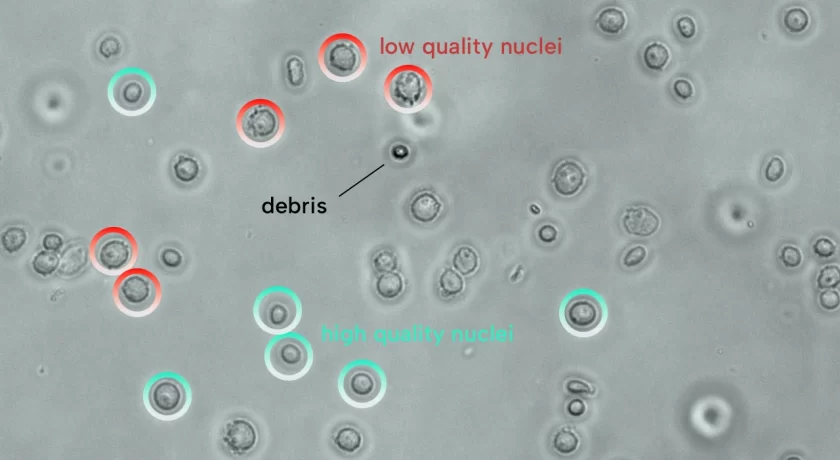
In this blog, we describe how single-cell RNA sequencing is used to understand the cellular complexity of the cornea tissue. This blog is based on a study published in Scientific Reports in November 2021.
The cornea is the part of the eye that allows light to enter and causes refraction of the light. It is composed of five layers. The structure and transparency of the cornea are governed by the functions of the different cell types present in each layer.
Regeneration of corneal tissue and understanding diseases of the cornea require knowledge of the different cell types across this heterogeneous tissue. Gaining a deeper understanding of corneal cell types and their transcriptomics can improve regenerative therapies.
Single-cell RNA sequencing
In this study, the single-cell RNA sequencing platform 10x Genomics was used. 19,472 cells from the cornea and limbi, which is the border between the transparent cornea and the white part of the eye, were single-cell RNA sequenced. Single-cell RNA sequencing and transcriptomic data analysis of these cells was performed at Single Cell Discoveries.
Main findings
Transcriptome analysis revealed five major cell clusters: corneal epithelial cells, corneal stromal cells, corneal endothelial cells, non-corneal blood/lymphatic vessel endothelial cells and immune cells.
Cell clusters from the three corneal cell layers were further analyzed. The corneal epithelium cells consist of nine subclusters. Differential gene expression analysis of two of these subclusters revealed novel specific markers for the corneal limbal stem cell niche and the transit-amplifying cells, which are undifferentiated cells that are in transition between stem cells and differentiated cells.
The corneal stromal cells consist of four subclusters and the corneal endothelial cells of two subclusters. Novel markers of stromal keratocytes, a subcluster of the corneal stromal cells, were identified.
Impact of the results
This study provides data to understand the heterogeneity of the human cornea and to identify specific cell types in the cornea based on novel markers. The data generated in this study can be used as a reference cell atlas with a major impact on future improvements and developments of therapies for corneal diseases. Click on the link below to read the full article.


